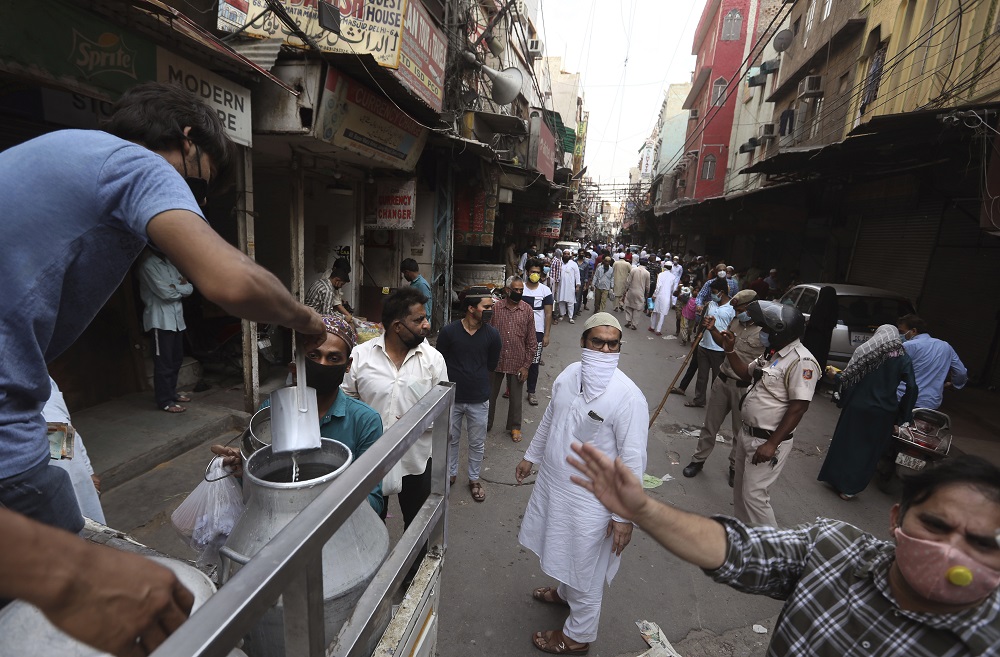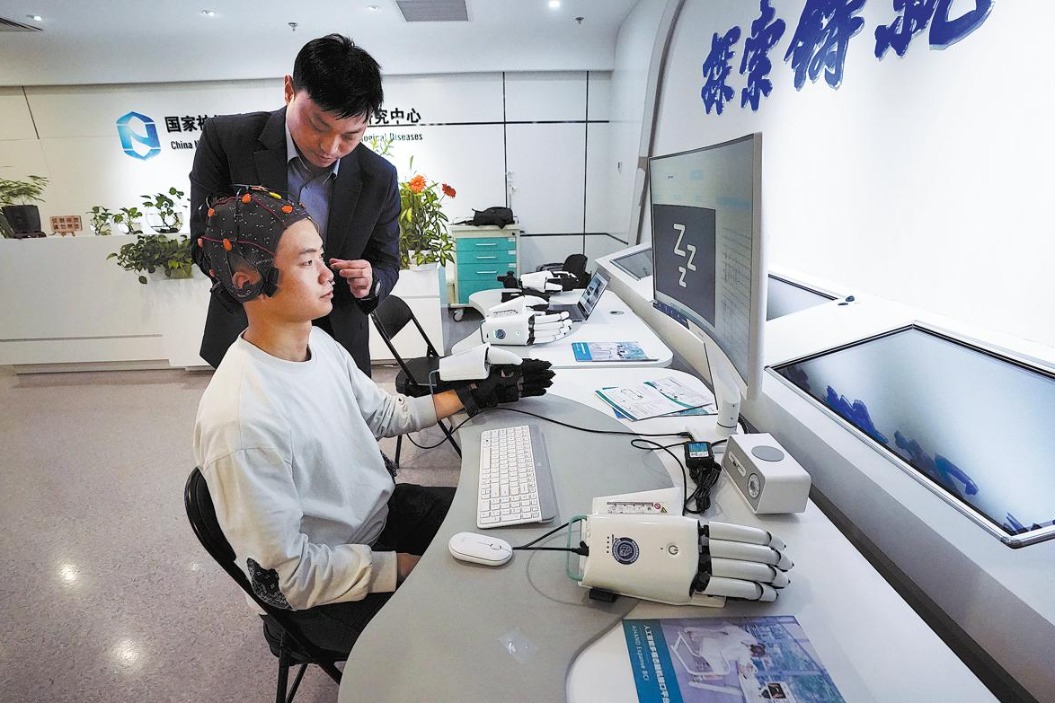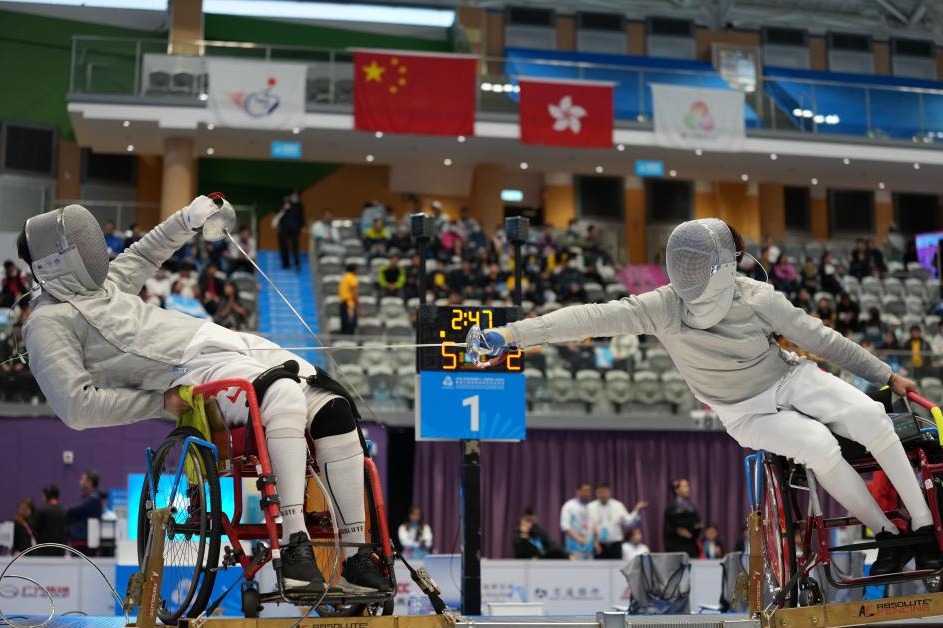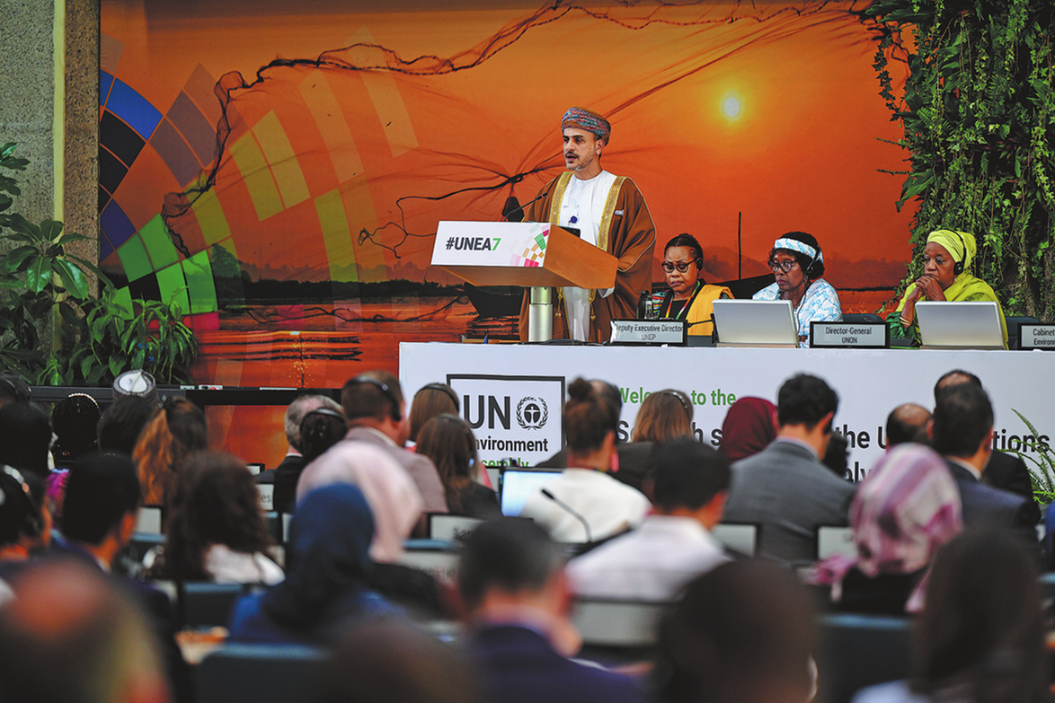China-India studies: Bridging the perception gap
By Rajeev Ranjan Chaturvedy and Miao Ji | chinadaily.com.cn | Updated: 2020-05-09 10:12

The leaders of China and India exchanged messages of felicitations on the occasion of the 70th Anniversary of the establishment of diplomatic relations between these two neighbors on April 1, 2020. At a time when the COVID-19 outbreak has resulted in unprecedented global disruptions, China and India have kept their channel of cooperation open and are actively collaborating to fight against the epidemic. While the epidemic has already badly impacted society and economy, that has not discouraged academics and experts in both the countries to celebrate the special occasion through exchange of ideas via virtual platforms. Most of the online discussions, however, focused on social, economic, strategic and cultural relations. Some phrases appear very often in almost all discussion on China-India relations, for example, 'perception gap' and 'lack of understanding of each other'. Such depictions make it useful to assess the development of knowledge infrastructure in China and India on Indian and Chinese affairs respectively. In fact, we need to understand each other in a more complex, globalized, and intrinsically connected world, not only because of geopolitical and geo-economic concerns, but also due to imperatives of collaboration to deal with common regional and global challenges.
India studies in China
China has a long history of Indian studies, evident in the huge stock of translation of India's ancient classics in Tibet, Xinjiang and inland area long before modern history. Buddhism was imported to China since the 1st Century and has become an integral part of the latter's tradition.
Modern China's Indian studies started in late 19thcentury and early 20thcentury and Peking University was the first higher education institute, under the leadership of prominent educator Cai Yuanpei, to offer courses on India studies, and hosted a group of internationally recognized scholars, including A.von Stal Holstein, who chaired the China-Indian Institute under the Harvard-Yenching Institute since 1918 where he trained talented scholars such as Lin Liguang and Friedrich Welller. Other Chinese universities also hosted a group of international scholars of India studies, such as Paul Demiéville from Xiamen University. Nobel Prize Winner Rabindranath Tagore's visit to China in 1924 generated interest in Indian culture.
In 1946, Peking University established the Department of Oriental Languages and Literature, which hosted two important intellectuals in Sanskrit, Ji Xianlin and Jin Kemu. The department has been training language students majoring in Sanskrit, Hindi, Urdu and Bengali since 1946 and remains the most important hub for India studies. Indian studies welcomed its golden age in China in the 1950s when the two newly independent powers enjoyed honeymoon in their bilateral relations and cooperated in international politics under the banner of Asia-Africa-Latin America Unity.
In 1964, instructed by Chinese leadership to enhance studies on foreign affairs, Sichuan University and Yunnan University launched a research institute with Indian studies as focal point. In the pre-reform era, the Xinhua News Agency also served as a major source of Indian studies. After China's opening-up in late 1970s, Indian studies in China have gained new momentum. China Academy of Social Sciences (CASS) established the Institute of South Asian Studies in 1978 (Now part of National Institute of International Strategy, CASS). China Foreign Affairs University and China Institute of Contemporary International Relations hosts some good scholars on Indian studies.
The first two decades of the 21st century have witnessed the continuous rise of India and studies of India in China too. Many academic organizations launched new centers specializing in India, including Shenzhen university of Guangdong (in 2005), Lanzhou University in Gansu (in 2009), Yunnan Academy of Social sciences (in 2015), and the Centre for Gandhian and Indian Studies at Fudan University in Shanghai (in 2016), etc. China Institute of Contemporary International Relations established a new independent institute in South Asian Studies in 2018. The number of scholars and student working on India grew considerably because of official support domestically and the rise of Indo-Pacific concept and strategies internationally.
Besides research institutes, there are two academic journals specially on South Asia, namely the Journal articles South Asian Studies(by CASS, which serves as secretariat for the China Association for South Asian studies), andSouth Asian Studies Quarterly(by Sichuan University) and both serve as platform and academic hub for China's Indian studies.
China studies in India
The knowledge infrastructure of China affairs in India started as early as 1937 with the ground-breaking institutional program for teaching and research on China with the establishment of Cheena Bhavanaat the Visva Bharati University. With the growing interactions between the two countries, the Chinese language teaching facilities were set up at various universities. Further, some Indian universities included 'China' in their courses, mainly at social science departments. However, the China studies program was not very attractive to students. While teaching and research work continued, it was not focused. A lack of resources and direction resulted limited foundation program and primary source based research on China. Jawaharlal Nehru University and Delhi University and some other institutions continued their teaching and research program on China. One of the oldest research institutions on China and East Asia in India, the Institute of Chinese Studies publishes China Report(a refereed journal in the field of social sciences and international relations). There are other forms of publications on China, growing gradually. The curiosity to understand China grew with the rise of China. As a result, the government as well as private sector started to pay greater attention on China studies in India. There is an incremental increase in China research institutes in India in government universities as well as private universities. India's Ministry of External Affairs has also set up Centre for Contemporary China Studies to get more focused research on China for policy inputs. With an aim to increase mutual understanding between India and China some institutions have been established recently, for example, China Studies Centre at Indian Institute of Technology Madras, Center for India-China Studies at the Jindal Global University, China-India Foundation in Delhi to name a few. There is increasing number of students studying in China in various disciplines including social sciences.
The way ahead
Though, it is important to note that despite growing number of institutes and research on India and China in both the countries, there is a lack of coordinated effort and focus. What is the way forward to deepen the understanding of each other? The improving academic infrastructure reflected India's growing importance in China's foreign policy and the global arena. Similarly, inescapable imperatives of the rise of China led to a gradual development of knowledge infrastructure in India to understand China. However, a common thread exists in both countries if it is compared to other area studies. The infrastructure for Indian studies in China and Chinese studies in India, have been less visible, largely fragmented and uncoordinated, even less in their academic collaboration with each other. Given expanding China-India bilateral, regional and global collaborations, more strategic investment is needed for better infrastructure and connectivity to understand each-other better. Together, China and India can contribute to make the world a better place.
The author Rajeev Ranjan Chaturvedy is Visiting Fellow, S. Rajaratnam School of International Studies (RSIS), Nanyang Technological University (NTU), Singapore; Miao Ji is Research Fellow of China Foreign Affairs University, Beijing. The opinions expressed here are those of the writer and do not represent the views of China Daily and China Daily website.
























